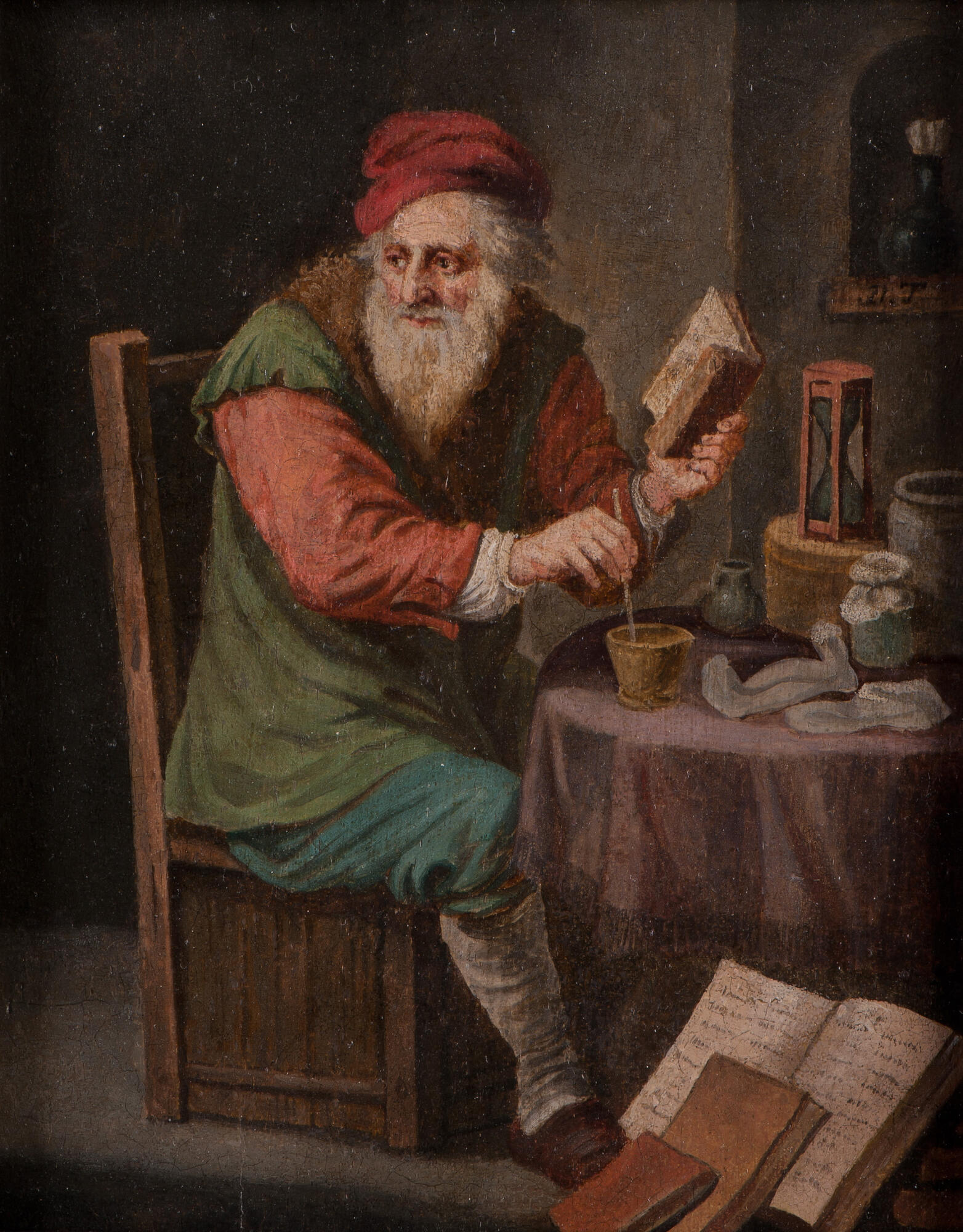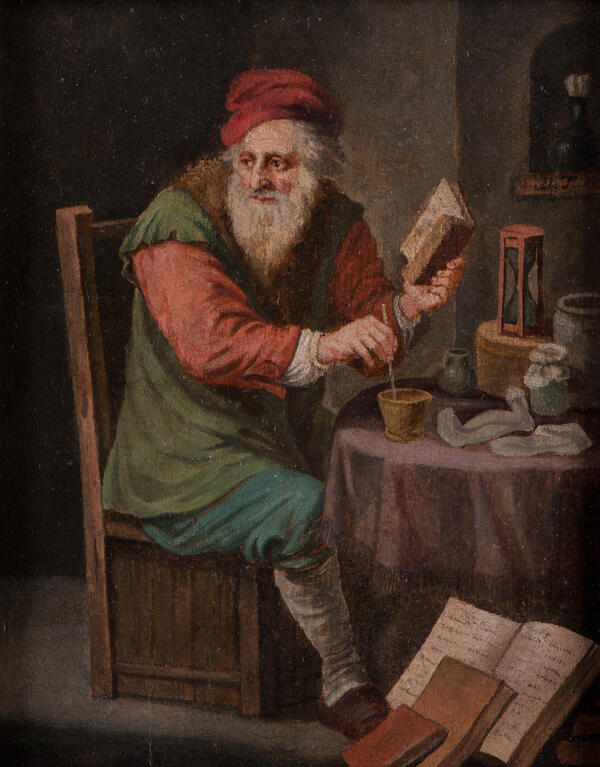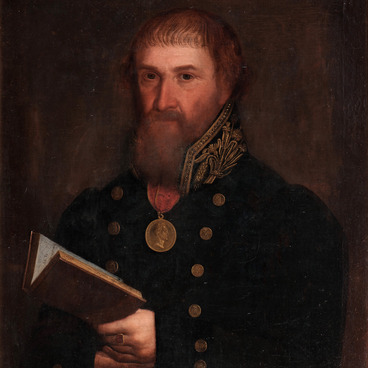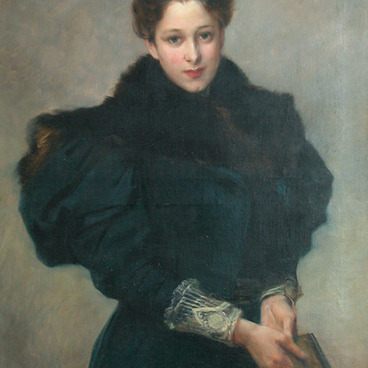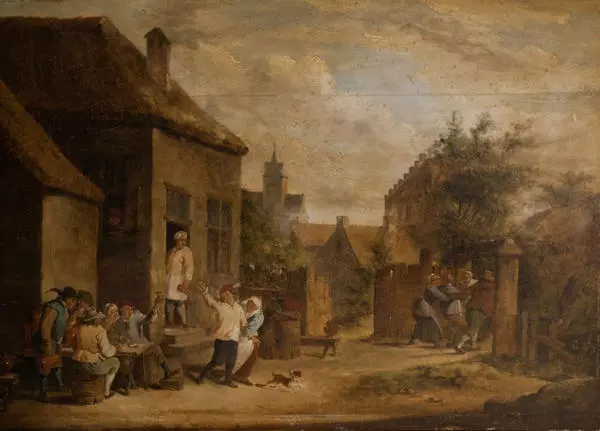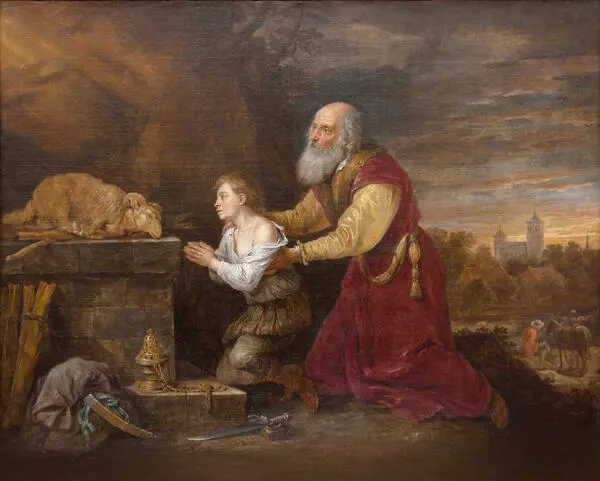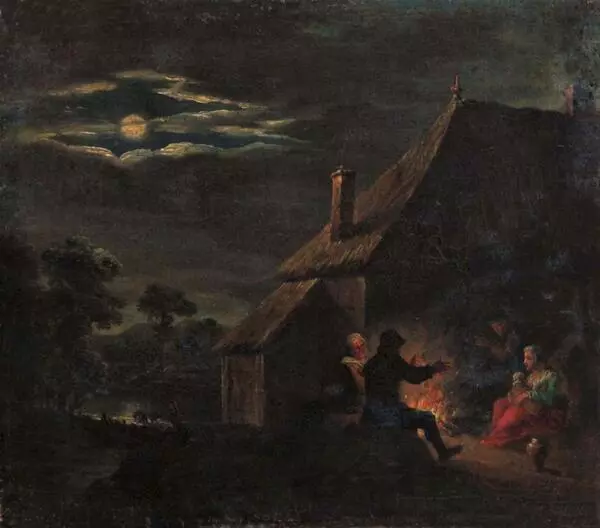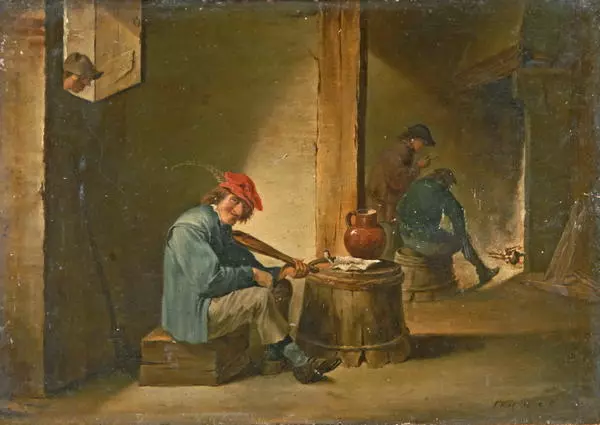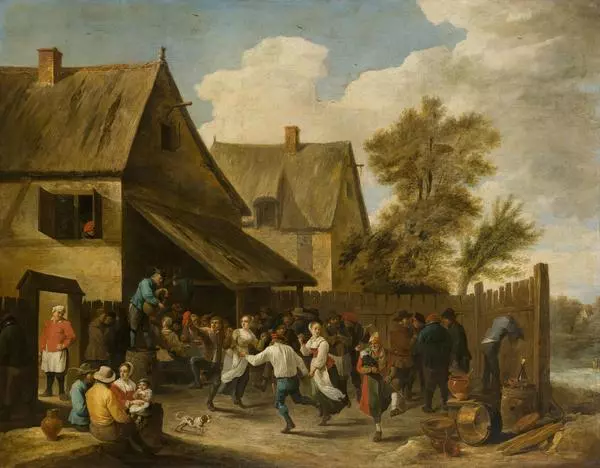This painting is by the indigenous Flemish painter David Teniers the Younger, who was the court artist and curator of the richest picture gallery of the Archduke Leopold Wilhelm of Austria.
The artist’s works mainly reflected the Flemish common folk life with its village holidays, weddings and parties. Teniers vigilantly observed these scenes and reproduced them extremely truthfully. His works were often imbued with subtle irony and humor.
Teniers was born in Antwerp, in a family of a painter. It was the father who began his vocational training. Experiencing material difficulties, the artist devoted a large amount of time to work, and at the age of 22 he was enrolled in the guild of painters. From an early age, he ventured in various genres: he worked on the creation of still-lifes, landscapes, painted animals and allegorical scenes. Still, most of the works he created are scenes with the participation of ordinary people, artisans and peasants. Sometimes Teniers added moments related to sacred history to everyday scenes, dressing biblical characters in costumes of the 17th century. Also, the artist, working on his paintings, sometimes acted as a storyteller: the same characters can be seen in different stories. Many of the author’s works are created in several genres at once: everyday life and portrait.
‘The Alchemist’ from the Zaraysk Kremlin collection was painted in the 17th century, when scientific knowledge in its modern sense was just beginning to develop. The preceding 15th and 16th centuries were the time of many discoveries: geographical (the discovery of America at the end of the 15th century), astronomical (Copernicus' heliocentric theory), medical (bloodstream) and technical (invention of printing, creation of a microscope and telescope). However, in the 17th century, many phenomena did not yet have a scientific explanation, and people interested in science seemed mysterious and even suspicious.
Such is the character depicted in ‘The Alchemist’. The old man is sitting at the table and stirring something in a cup, in his hand is a book, possibly with recipe. The table itself is lined with various vessels and an hourglass, stack of books is under it. Without looking up from his work, the old man glanced around worriedly. From the way the lighting falls, it can be assumed that he was distracted by a sudden guest who opened the door.
The artist’s works mainly reflected the Flemish common folk life with its village holidays, weddings and parties. Teniers vigilantly observed these scenes and reproduced them extremely truthfully. His works were often imbued with subtle irony and humor.
Teniers was born in Antwerp, in a family of a painter. It was the father who began his vocational training. Experiencing material difficulties, the artist devoted a large amount of time to work, and at the age of 22 he was enrolled in the guild of painters. From an early age, he ventured in various genres: he worked on the creation of still-lifes, landscapes, painted animals and allegorical scenes. Still, most of the works he created are scenes with the participation of ordinary people, artisans and peasants. Sometimes Teniers added moments related to sacred history to everyday scenes, dressing biblical characters in costumes of the 17th century. Also, the artist, working on his paintings, sometimes acted as a storyteller: the same characters can be seen in different stories. Many of the author’s works are created in several genres at once: everyday life and portrait.
‘The Alchemist’ from the Zaraysk Kremlin collection was painted in the 17th century, when scientific knowledge in its modern sense was just beginning to develop. The preceding 15th and 16th centuries were the time of many discoveries: geographical (the discovery of America at the end of the 15th century), astronomical (Copernicus' heliocentric theory), medical (bloodstream) and technical (invention of printing, creation of a microscope and telescope). However, in the 17th century, many phenomena did not yet have a scientific explanation, and people interested in science seemed mysterious and even suspicious.
Such is the character depicted in ‘The Alchemist’. The old man is sitting at the table and stirring something in a cup, in his hand is a book, possibly with recipe. The table itself is lined with various vessels and an hourglass, stack of books is under it. Without looking up from his work, the old man glanced around worriedly. From the way the lighting falls, it can be assumed that he was distracted by a sudden guest who opened the door.
